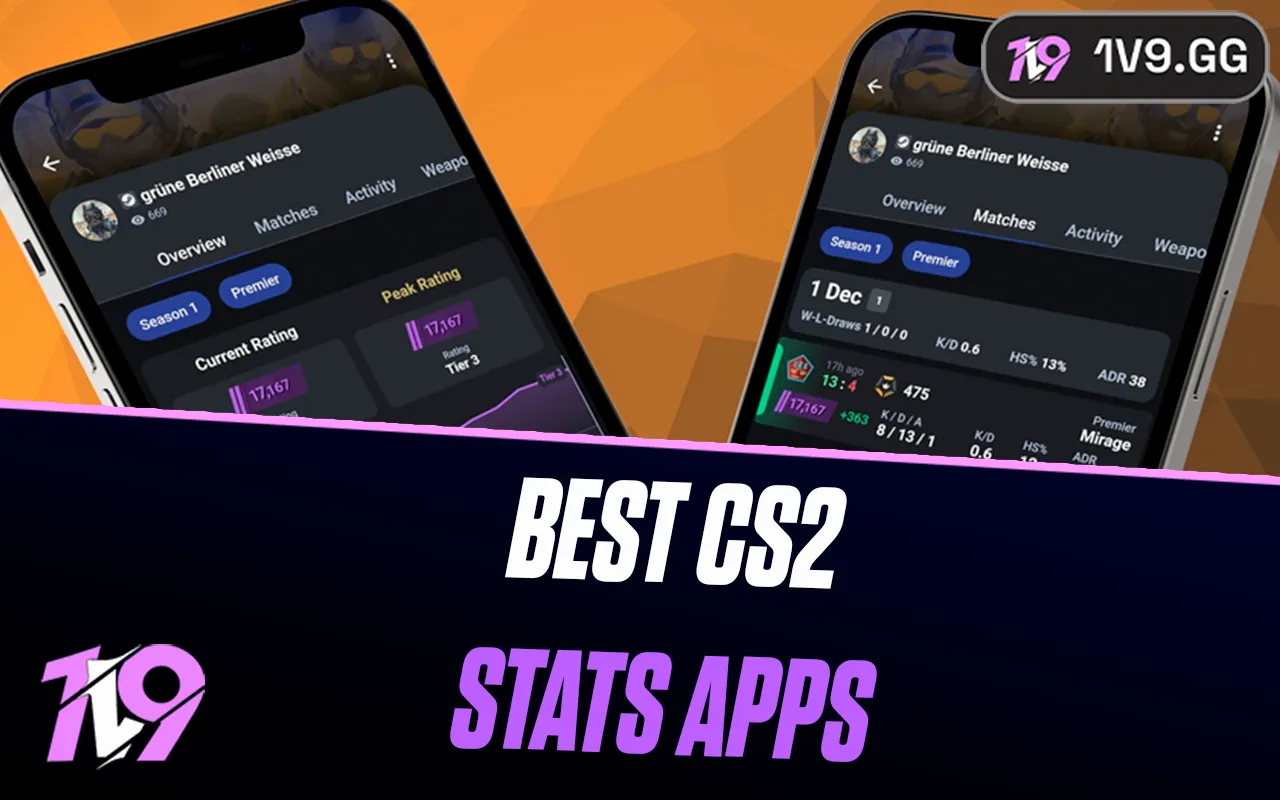- Home
Games
 League of Legends
League of Legends Valorant
Valorant-a6d5b3e156bb.webp) Fortnite
Fortnite Call of Duty
Call of Duty Clash of Clans
Clash of Clans GTA 5
GTA 5 Counter-Strike 2
Counter-Strike 2 Roblox
Roblox Rainbow Six Siege
Rainbow Six Siege Clash Royale
Clash Royale Minecraft
Minecraft Dota 2
Dota 2 Rocket League
Rocket League Genshin Impact
Genshin Impact Squad Busters
Squad Busters Rust
Rust Apex Legends
Apex Legends Pokemon Go
Pokemon Go XDefiant
XDefiant Hay Day
Hay Day Diablo 4
Diablo 4 LoL: Wild Rift
LoL: Wild Rift World of Warcraft
World of Warcraft FC 25
FC 25 Destiny 2
Destiny 2 Marvel Rivals
Marvel Rivals The Finals
The Finals Deadlock
Deadlock-9ede9dc6b01b.webp) PUBG Mobile
PUBG Mobile Forza Horizon 5
Forza Horizon 5 Growtopia
Growtopia Honkai: Star Rail
Honkai: Star Rail Warframe
Warframe 8 Ball Pool
8 Ball Pool Zenless Zone Zero
Zenless Zone Zero Path of Exile
Path of Exile Runescape 3
Runescape 3 Raid: Shadow Legends
Raid: Shadow Legends Lost Ark
Lost Ark WoW: Classic Era
WoW: Classic Era Summoners War
Summoners War WoW: Season of Discovery
WoW: Season of Discovery WoW Cataclysm
WoW Cataclysm WoW: Hardcore
WoW: Hardcore Throne and Liberty
Throne and Liberty Escape From Tarkov
Escape From Tarkov Mobile Legends
Mobile Legends New World
New World Path of Exile 2
Path of Exile 2 Blade Ball
Blade Ball Fisch
Fisch Pet Simulator 99
Pet Simulator 99 Pets Go
Pets Go-d8bcef7708c7.webp) One Piece Bounty
One Piece Bounty Anime Adventures
Anime Adventures Blox Fruits
Blox Fruits Adopt Me
Adopt Me Murder Mystery 2
Murder Mystery 2 Fragpunk
Fragpunk Wuthering Waves
Wuthering Waves Teamfight Tactics
Teamfight Tactics Free Fire
Free Fire Albion Online
Albion Online Black Desert Online
Black Desert Online Brawl Stars
Brawl Stars Honor of Kings
Honor of Kings Arena of Valor
Arena of Valor Call of Duty: Mobile
Call of Duty: Mobile Rematch
Rematch Steal a Brainrot
Steal a Brainrot Grow a Garden
Grow a Garden FC 26
FC 26 Old School Runescape
Old School Runescape Plants vs Brainrots
Plants vs Brainrots Overwatch 2
Overwatch 2 Battlefield
Battlefield Arc Raiders
Arc Raiders Dragon Ball Legends
Dragon Ball Legends Fallout 76
Fallout 76 Jailbreak
Jailbreak Type Soul
Type Soul GPO
GPO DonutSMP
DonutSMP- Lootboxes
- Become Affiliate
- Blog
- Contact Us
- Sign In

League of Legends: 10 Jungle Tips for Beginners
The Jungle role in League of Legends stands out as one of the most unique and challenging roles in the game. Unlike laners, junglers engage primarily in PvE combat, taking on Jungle monsters instead of farming minions in lanes. This distinct playstyle, combined with the strategic depth of the Jungle, can make the role feel intimidating for new players.
However, with the right guidance and tips, even beginners can learn to thrive in the Jungle and discover just how rewarding it can be. The Jungle is constantly evolving, and the 2025 season introduces significant changes to objectives in the Baron Pit and lane entrances, impacting gank paths and overall strategy. Adapting to these changes is key for any aspiring jungler.
In this guide, we’ll break down ten beginner-friendly tips that will help you understand the Jungle, improve your gameplay, and start climbing the ranks with confidence. Let’s dive in and master the art of jungling!
#10: Make the Most of the Practice Tool

The Practice Tool in League of Legends is an invaluable resource for players, especially for junglers looking to hone their skills. This tool offers a controlled environment where you can safely experiment with various techniques, such as learning to clear Jungle camps efficiently and mastering pathing.
For beginner junglers, the main focus should be on familiarizing themselves with each Jungle camp, understanding the unique challenges of fighting them, and practicing transitions between camps. Start by clearing your entire Jungle once, then use the reset option in the Practice Tool to immediately try again. Repetition will help you build confidence and consistency in your clears.
Different champions have unique Jungle clearing mechanics, making this tool particularly helpful when trying out new junglers. Even professional players rely on the Practice Tool to fine-tune their clears and discover the most optimal paths. Whether you’re learning the basics or pushing for high-level optimization, incorporating the Practice Tool into your routine is a game-changer for junglers.
#9: Prioritize the Big Monsters

In Jungle camps like Krugs, Raptors, and Murk Wolves, there are multiple smaller monsters alongside a larger one. While clearing the entire camp is ideal for maximizing gold and experience, your main priority should always be the big monster for two key reasons.
First, defeating the large monster provides a crucial heal, which can be a lifesaver when your health is running low. This sustain allows you to continue clearing camps or preparing for other objectives without needing to recall prematurely.
Second, if you’re pressed for time and can’t clear the entire camp, taking down the large monster ensures the smaller ones will die on their own after a short period. Although you’ll miss out on some gold, this still resets the camp, allowing it to level up and respawn in a few minutes with better rewards. This strategy ensures your farming efficiency isn’t compromised in the long run.
By focusing on the big monsters, you can maintain better health, adapt to changing game situations, and optimize your Jungle clears for future opportunities.
#8: Master Spawn Timers

Understanding spawn timers is essential for dominating the Jungle and controlling the map in League of Legends. Knowing when camps and objectives will appear and respawn allows you to plan your clears, secure key objectives, and stay ahead of the enemy jungler.
Jungle camps like Wolves, Raptors, Red Buff, and Blue Buff all spawn at 1:30, while Krugs and Gromp appear slightly later at 1:42. Smaller camps like Wolves and Raptors respawn every 2 minutes and 15 seconds, whereas Red Buff and Blue Buff take 5 minutes to return after being cleared. Scuttle Crabs first appear at 3:30 and respawn 2 minutes and 30 seconds after both are taken down.
Major objectives like Dragons spawn at 5:00 and reappear every 5 minutes, while Baron Nashor arrives at 20:00 with a 6-minute respawn timer. Rift Herald spawns at 14:00 but does not respawn after being defeated. Elder Dragon spawns 6 minutes after one team claims its fourth Dragon and follows the same 6-minute respawn interval.
Key spawn times for important objectives are also displayed on the minimap or scoreboard, which you can view by pressing TAB. This makes it easier to track crucial timers and plan accordingly. Regularly checking TAB ensures you’re always aware of what’s coming up and can adjust your strategy to secure or contest these objectives.
By mastering spawn timers, you’ll gain better control over the Jungle, optimize your clears, and improve your overall map awareness, giving your team a significant advantage.
#7: Avoid Ganking Losing Lanes

As a jungler, your role often involves helping your team through well-timed ganks. The goal of a gank is typically to secure a kill or force enemies to burn key summoner spells like Flash, creating advantages for your laners. With the numbers advantage that a gank provides, success is usually in your favor—unless the lane is already heavily behind.
Ganking a losing lane can often backfire, especially if the enemy laner is significantly ahead in gold or experience. In such cases, an attempted gank might not only fail but could result in both you and your teammate dying, further worsening the situation. Instead, focus your attention on winning or even lanes where your intervention can tip the scales in your team’s favor, creating a strong win condition.
If no lanes seem like good targets for a gank, consider shifting your focus to farming your Jungle efficiently or securing objectives like Dragons. If your champion scales well into the late game, investing in your own growth can often be the best play. Objectives like Dragons provide team-wide advantages and can contribute to your team’s victory even if your laners are struggling.
Choosing your ganks wisely is key to effective jungling. By prioritizing impactful plays and avoiding risky scenarios, you can ensure you’re consistently adding value to your team.
#6: Choose the Right Lanes to Gank

Ganks are a crucial tool for snowballing a lead and helping your team gain an advantage, but determining the best targets requires careful consideration. To identify ideal lanes for a gank, start by looking for enemies who are vulnerable—those who are immobile, squishy, or lacking key Summoner Spells like Flash. Additionally, pay attention to their positioning; enemies who are overextended or pushed too far up are prime candidates for a successful ambush.
Some champions, however, have built-in escape tools, such as Vladimir’s pool or Ezreal’s Arcane Shift, which can make them more challenging to gank. In these cases, it’s essential to weigh your chances of success against the risk of failure.
Next, evaluate the synergy between your champion and your laner. Does your ally have strong crowd control or abilities that make it easy to lock down enemies? Lanes with good gank setup—especially those with reliable CC—can turn even difficult ganks into successful ones. Similarly, consider whether your combined damage output is sufficient to secure the kill. Without enough burst or sustain damage, your efforts may fall short, giving the enemy a chance to escape.
By prioritizing vulnerable targets and leveraging strong teamwork, you can maximize the effectiveness of your ganks and create meaningful advantages for your team. Smart targeting and coordination are the keys to turning small opportunities into game-winning plays.
#5: Reserve Your Smite for Key Objectives

As a jungler, one of your primary responsibilities is securing neutral objectives like Dragons, Rift Herald, and Baron Nashor. These objectives are vital for your team’s success, and your Smite Summoner Spell is the key to ensuring they don’t fall into enemy hands. Smite deals a significant burst of true damage, allowing you to secure objectives when timed correctly. For example, if a Dragon is at 590 HP and your Smite deals 600 damage, you’ll guarantee the kill for your team.
However, timing Smite isn’t always straightforward, especially when the enemy jungler is contesting the objective. Beginners should focus on one essential rule: save Smite when you know you’ll be going for an objective soon. Holding onto your Smite ensures you’ll have it available for critical moments like securing a Dragon or stealing Baron.
That said, don’t be afraid to use Smite during regular Jungle clears when no objectives are up. Smite has two charges, so using it on tougher camps like Red Buff or Blue Buff can help you maintain tempo and stay healthy. The key is balancing when to use it for efficiency and when to save it for game-changing objectives.
By mastering Smite usage, you’ll not only secure objectives more consistently but also build confidence in high-stakes situations where timing is everything.
#4: Learn the Unique Mechanics of Each Dragon

While every player benefits from understanding the rewards provided by Elemental Dragons, it’s especially critical for junglers to know how each Dragon fights. Not all Dragons behave the same, and adapting your approach based on the specific Dragon you’re facing can make all the difference. In some cases, it might even be better to delay or avoid the fight altogether.
For instance, both the Infernal and Chemtech Dragons have AoE attacks that can damage multiple targets. As a result, junglers should position carefully, ensuring they’re not standing too close to allies while tanking these Dragons. This reduces the risk of unnecessary damage to your team.
The Mountain Dragon, on the other hand, is significantly tankier than other Dragons. If your champion doesn’t have strong damage output, consider waiting for your teammates before engaging. Attempting to solo this Dragon could take too long, leaving you vulnerable to enemy interference.
Finally, Dragons like the Ocean and Hextech require extra caution when enemies are nearby. Their slow effects can create opportunities for opponents to collapse and turn the fight in their favor. Proper positioning and map awareness are essential when taking on these Dragons.
By learning the unique behaviors and challenges of each Elemental Dragon, you can make smarter decisions, ensuring successful takes while minimizing risks to yourself and your team.
#3: Don’t Hesitate to Take Lane Farm When Needed

As a jungler, you might think lane minions are off-limits, but there are times when stepping into a lane to farm is not only acceptable but also beneficial for your team. Understanding when to take lane farm can help you maximize resources and keep your team ahead.
If minions are about to die to a turret and no ally is nearby to collect them—either because they’re dead, recalling, or elsewhere on the map—you should take the farm. Allowing these minions to go to waste means losing valuable gold and experience that could strengthen your impact in the game.
Additionally, if you gank a lane and both your ally and the enemy laner die, it’s often smart to push the wave into the enemy tower. Doing so denies the enemy valuable farm and resets the wave, giving your teammate a more favorable position when they return. This tactic can disrupt the enemy’s rhythm while ensuring your team benefits from the situation.
Knowing when to step into a lane and claim minions is a skill that not only supports your team but also keeps your gold and experience growth consistent, making you an even more effective jungler.
#2: Focus by Playing with Chat Muted

The Jungle role is one of the most impactful in League of Legends, as it allows you to influence every part of the map. However, this also makes junglers a frequent target for blame when things go wrong. Unrealistic expectations from teammates can lead to frustration, criticism, and unnecessary distractions.
To maintain focus and a positive mindset, consider muting the chat entirely. If you find pings becoming overly aggressive or distracting, you can mute those too. This ensures you stay fully engaged in the game without the negativity affecting your performance. Fortunately, new players may not need to adjust their settings, as chat is now disabled by default for those just starting out in League.
Keeping a strong mentality is essential for improving in any competitive game. By avoiding toxicity and staying focused on your gameplay, you’ll not only perform better but also enjoy the experience more. Use these tools to block out distractions and concentrate on what really matters: winning the game.
#1: Start Topside to Catch the Enemy Off Guard with a Botside Gank

Most new junglers tend to begin their clear on the bot side of the map, as having two teammates from the bottom lane to assist with the first camp makes the process smoother. While this approach is a great starting point for beginners, advancing your jungling skills means knowing when to mix things up—starting on the top side can be a game-changer.
By starting topside, you can path toward the bottom lane for an unexpected gank. Many players won’t anticipate this route, giving you the element of surprise and increasing the chances of securing an early kill or forcing Summoner Spells. Even if a gank isn’t on the cards, this route positions you to contest the bottom Scuttle Crab, as the opposing jungler will likely be pathing toward the top side for their own crab.
Switching up your starting position keeps your gameplay unpredictable and can create early opportunities to put your team ahead. Whether it’s a surprise gank or securing map control, starting topside is a clever tactic to outsmart your opponents and take your jungling to the next level.
Conclusion
Mastering the Jungle role in League of Legends can feel daunting for beginners, but with the right tips and a bit of practice, it quickly becomes one of the most rewarding roles in the game. From learning how to clear camps efficiently to understanding spawn timers and optimizing your pathing, each step you take builds a solid foundation for success.
By focusing on effective strategies like using the Practice Tool, knowing when to gank, and prioritizing objectives, you can maximize your impact on the map and support your team effectively. Remember, adaptability is key—every match is different, and learning to respond to dynamic situations is what separates a good jungler from a great one.
Stay patient, keep practicing, and most importantly, enjoy the process of growing into a skilled jungler. With these beginner tips, you’re well on your way to becoming a crucial force for your team and climbing the ranks in League of Legends.
Posted On: January 25th, 2025
Recent Articles
💬 Need help?
Our 1v9 support team is available 24/7 to help you with any questions or issues you may have.
support@1v9.gg
Loading...
1v9.gg is not endorsed or affiliated by any game developers or publishers.
2025 1v9, All Rights Reserved, Created By NightDev






